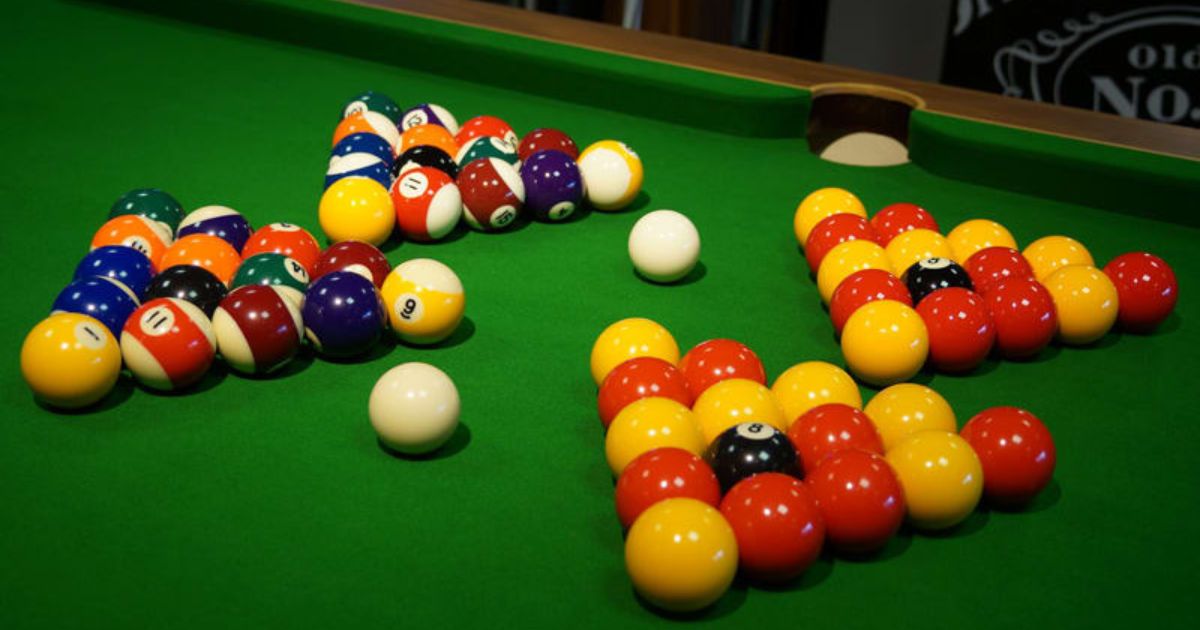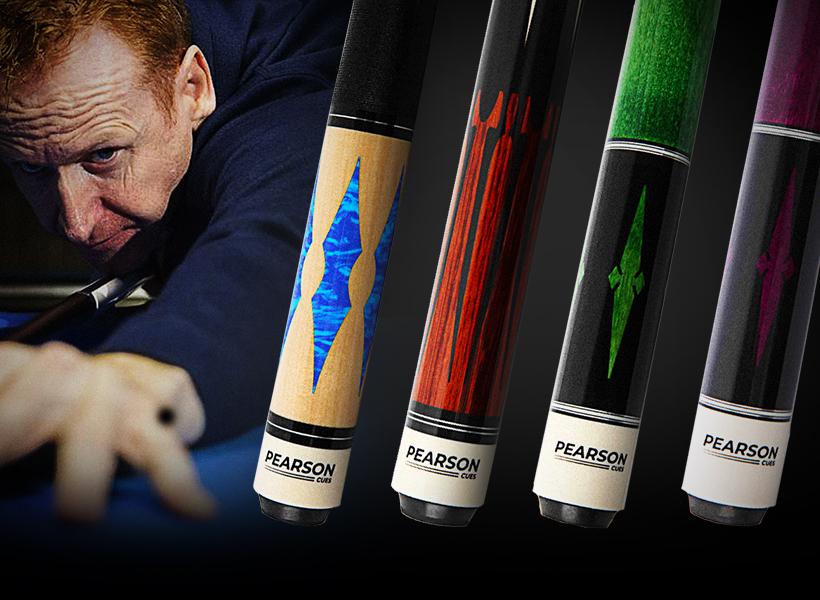Billiards vs Pool vs Snooker: 4 Key Differences
Key Takeaways
- What are Billiards, Pool, and Snooker?
- 4 key differences between Billiards vs Pool vs Snooker

What is Billiards?
Billiards, sometimes called carom billiards, is among one of the cue sports which refer to games played with cue sticks on tables without pockets. Popularly, billiards just use 3 balls: one red ball, white one with spot, and white without spot.

What is Pool?
Pool is a group of cue sports that are played with cue sticks but on a table with six pockets along the rails where balls are dropped. Pool is normally played with one black ball, seven yellow balls, seven red balls, and a white cue ball, however, the number of balls used depends on the game.

What is Snooker?
Snooker is also one of the cue sports that is played with cues on a six-pocket table. Snooker is normally played using fifteen red balls, six colored balls, and one cue ball, all of which are significantly larger than pool balls.
Snooker is different from billiards and pool because three balls can be used as a striker to hit other balls whereas you can only hit the white cue ball in the former.

4 Key Differences between Billiards vs Pool vs Snooker

1. Rules
Billiards
In billiards, you must bounce the cue ball off the other two balls to score points, which are referred to as counts. Keep in mind that these two other balls are already on the table and that the cue balls are white and yellow.
You must string to determine who will start the match, which can be based on an imaginary line (head string) or the number of wins (scoring string).

Pool
To Play Pool, players win points by shooting balls into the table’s pockets. Players agree ahead of time that they will reach a set number of points to be considered the winner (a typical game is one hundred points, whereas a professional game is usually one hundred fifty points).
Any ball on the table can be pocketed, and each ball pocketed successfully earns the player one point.
Straight pool is a ‘call-pocket’ game, which means that before shooting, players must say which ball will go in which pocket. The intended ball must reach the intended pocket for the shot to be successful.
Snooker
Snooker games are organized into frames. The player can win a frame by scoring the most points by pocketing the red and colored balls with the cue ball.
The red balls are worth one point each, while the yellow is worth two, the green three, the brown four, the blue five, the pink six, and the black seven.
On a given turn, the rules determine which ball can be pocketed. The “on” balls are those that can be pocketed on any given turn.
2. Table

Pool Tables
- Size: Pool tables are smaller than snooker tables but come in various sizes. The most common sizes are 7 feet, 8 feet, and 9 feet in length.
- Pockets: Pool tables have six pockets (four corner pockets and two side pockets). The pockets are wider and more forgiving compared to snooker tables.
- Cushions: The cushions on pool tables are designed to provide a relatively lively rebound, aiding in faster-paced play.
Snooker Tables
- Size: Snooker tables are significantly larger than pool tables, with the standard size being 12 feet by 6 feet.
- Pockets: Snooker tables also have six pockets, but the pockets are narrower and more challenging to pocket balls into, requiring greater precision.
- Cushions: The cushions are designed to provide a more controlled and less bouncy rebound than pool tables.
Billiards Tables
- Size: Carom billiards tables are typically 10 feet by 5 feet.
- Pockets: Carom billiards tables do not have pockets at all, as the game does not involve potting balls but rather focuses on hitting object balls in a specific manner.
- Cushions: The cushions on carom tables are designed for maximum accuracy and minimal rebound, as precision is crucial for carom shots.
3. Balls

- Snooker is played using twenty-two balls, one of which is the striker ball, which is white. A total of fifteen red balls, as well as one each of yellow, brown, blue, pink, black, and green, were used. Each of the balls has a diameter of 2 1/16 inches.
- Billiards, on the other hand, uses only three balls: one each of white, yellow, and red, with the white and yellow serving as strikers. Balls have a diameter of 2 7/16 inches.
- In Pool, the number of balls in a full set of pool balls varies depending on the type of the game, but a full set includes sixteen balls, each 2 1/4 inches in diameter: eight solid color balls numbered one to eight, seven balls with a color stripe numbered nine to fifteen, and a solid white ‘cue’ ball.
4. Cues

Billiards Cues: Billiards cues feature a medium-weighted cue (17-21 ounces) with a moderate taper and a tip diameter typically ranging from 11-12mm. This configuration balances the power and precision necessary for carom shots on pocketless tables.
Pool Cues: Pool cues are heavier (18-21 ounces) and shorter (57-58 inches) compared to snooker cues, with a thicker shaft and a larger tip diameter (12.75-13.25mm). This construction provides the necessary power and control for maneuvering the larger, heavier balls used in various pool games like Eight-ball and Nine-ball.
Snooker Cues: Snooker cues are lighter (16-18 ounces) and longer (57-58 inches) with a thinner shaft and smaller tip diameter (9-10.5mm). This design enables precise cue ball control for the smaller snooker balls and the intricate positional play required in snooker, a game emphasizing strategy and finesse.
FAQs
Billiards vs Pool: how to distinguish?
These 2 terms sometimes are used mistakenly because they all refer to cue sport using the cue sticks. However, you can easily differentiate them by looking at the table and the ball’s numbers. Billiards uses tables without pockets with 3 balls while Pool uses tables with 6 pockets and 8 balls. Sometimes, people call Pool pocket Billiards.
Can you play snooker on a pool table?
Yes, but with some preparation. They are different in rules, ball numbers, and especially, the table used. However, it is interesting that you can definitely play Snooker on a Pool table. You’ll need to sketch the snooker ‘D’ form at one end of the table with extreme caution. Some players will purchase spot stickers and use them to mark out where the colored balls should go.

Dave Pearson
Dave Pearson, the world's leading pool entertainer, is renowned globally as the ultimate exhibition player.
Boasting 20 world records endorsed by the prestigious Guinness Book of World Records, Dave established a legendary history in the sport industry.



